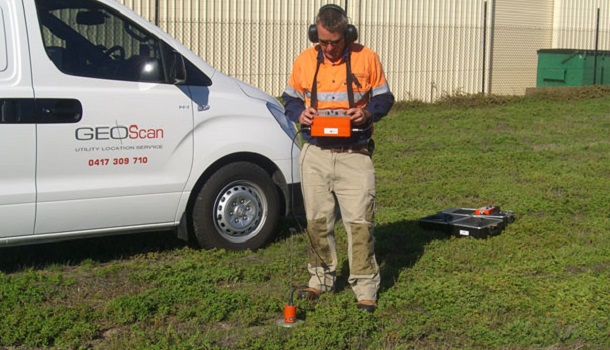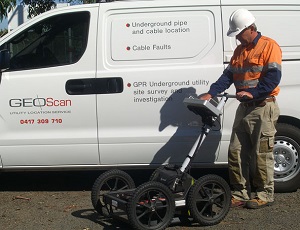
For detecting underground cables, an array of tools is used. Each of the locating tools is used for a specific function and is available with some limitations too. The most popularly used tools for the detection of underground utilities are the APLs, electromagnetic utility locators and the ground penetrating radars. Discussed below are the features that make the acoustic pipe locators one of the most widely used tools.
APLs are preferred for pipe detection due to the manifold limitations of the other underground utilities locating tools like ground penetrating radars (GPR) and electromagnetic utility location service tool.
Electromagnetic Utility Locators
The electromagnetic utility locating tools are used for the detection of the underground cables. These tools make use of electricity for creating the metallic field for the
detection of the underground cables. These conventional electromagnetic (EM) utility locators comprise of two parts, the receiver, and transmitter. The transmitter electrifies the cables by transmitting the electric current.
Limitations of the Electromagnetic Utility (EM) Locators:
- The EM locators can only be used for detecting the metallic utilities and not the non-metallic lines without the help of a tracer wire.
- The presence of other metallic objects such as metallic vehicle and building near target line produces distortions and cause erroneous readings.
- Another limitation of using the electromagnetic utility locating equipment is that the operator cannot understand the kind of utility property being detected.
Ground Penetrating Radar
 The ground penetrating radars (GPR) is used for detecting underground utility property both the non-metallic and the metallic cables. The dielectric constant of the media to be scanned dictates the proportion of signal absorbed by the substrate. The moisture content of the soil impacts GPR signal and therefore wet soil is preferred to the dry soil.
The ground penetrating radars (GPR) is used for detecting underground utility property both the non-metallic and the metallic cables. The dielectric constant of the media to be scanned dictates the proportion of signal absorbed by the substrate. The moisture content of the soil impacts GPR signal and therefore wet soil is preferred to the dry soil.
The dielectric constant is dependent on the frequency of the GPR. Greater the frequency, more would be the resolution with shallow depth penetration. On the other hand, lower the frequency, lower would be the resolution with greater depth penetration.
Limitations of the Ground Penetrating Radar (GPR)
- For the detection of cables with the aid of the GPR, the condition of the soil plays a key role.
- With the help of this underground utility equipment, it is not possible to detect small cables buried deep underground. The efficiency with which the underground objects can be detected depends on their size. Greater the depth of the objects, more should be their size, so that they can be detected by the GPR.
- Some specific types of pipe materials cannot be detected by the GPR, no matter the depth and the kind of soil.
Acoustic Pipe Locator (APL)
The acoustic pipe locator is one of the widely used tools for the acoustic pipe detection. These APLs solved the massive issue of detecting underground conduits, cables and PVC pipes. The acoustic pipe locators offer a supplemental and alternative method for locating the underground pipes.
They detect the underground structures with a procedure called the 'acoustic impedance mismatch.' In this process, APL receives and transmits the sound waves and then detects the differences in the 'acoustic impedance' in soil brought about by the cables, ducts and the various other underground infrastructures.
Benefits of Acoustic Pipe Locators over Other Utility Locating Tools
- User-friendly tool and it does not depend on the condition of the soil for detection of the underground cables.
- It is a cheaper tool and is easily accessible too, when compared to the other tools.
- It gives fast and accurate readings of the underground utilities in minutes.
- It helps in the detection of both the non-metallic and metallic pipes even at a depth of 15 to 30 feet.
- It saves a lot of time of the excavators.
Due to the technical limitations of the various utility locating tools like the GPR and the EM locators, the APLis the preferred utility locating equipment. Unlike the EM locators which can detect only the metallic or non-metallic pipes with unbroken tracer wires or the GPR that need suitable soil conditions, the APRs can detect any size of target utilities, underground, at great depths on any soil.